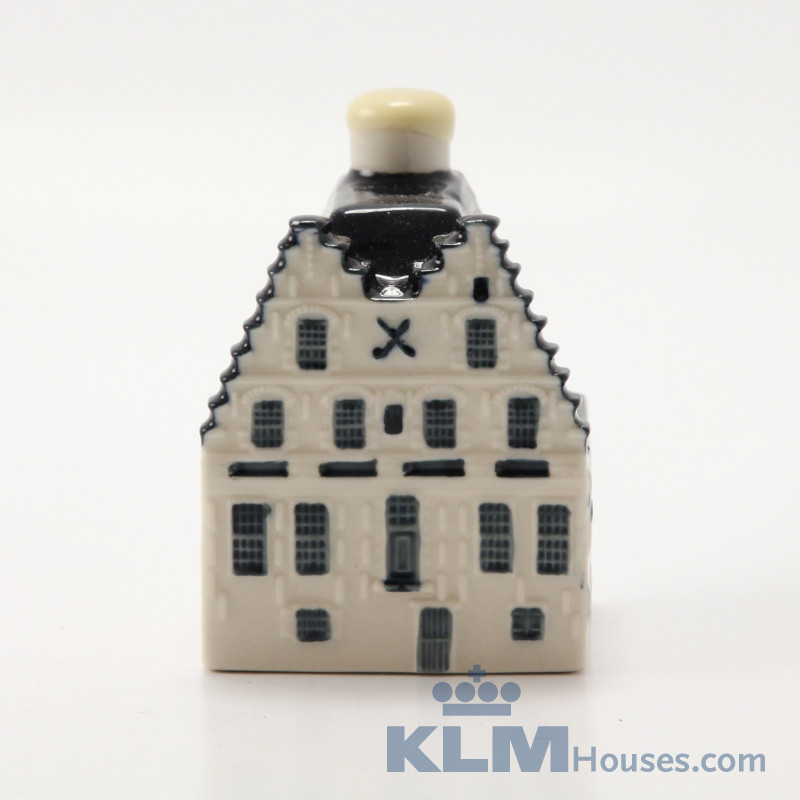




Miniature #87 - Pepper House
Wierdijk 12-22, Enkhuizen, The Netherlands
The 'Peperhuis' (Pepper House)
The Peperhuis is the only building in Enkhuizen that keeps the memory of the Dutch East India Company (VOC) alive.
The wealthy salesman and ship owner Pieter van Beresteyn had it built in 1625. He used it as a home, office and warehouse.
His widow sold it to the VOC in 1682. This illustrious trading company stored pepper and other products from the East in the building until the end of the eighteenth century.
The building was donated to the Zuiderzee Museum in 1947 by the owners at that time, the Enkhuizen seed trading company 'Sluis en Groot'.
The Zuiderzee Museum reconstructed the 18th century VOC warehouse at 'de
Peperzolder' (the Pepper Attic). Much of the original interior has remained intact. Notches and numbers are still visible on the beams, which show where the shelves that stored the goods were once positioned.
Zuiderzeemuseum
Wierdijk 12-22
Enkhuizen, The Netherlands Tel.: +31 (0) 228 - 35 II II
zuiderzeemuseum.nl
Open November to March, Tuesday to Sunday, 10.00 am - 17.00 pm, April to October, daily
10.00 am - 17.00 pm. The museum can also be hired for private receptions.
AMSTELVEEN, October 9, 2006 KLM Royal Dutch Airlines celebrated its 87th anniversary in true tradition on October 7, 2006, with the presentation of a new Delftware miniature. The Delftware miniatures are replicas of Dutch historical buildings. The Peperhuis (Pepper House) on the Wierdijk in Enkhuizen was selected as the 87th miniature. Mr. Rob van Hijfte,Vice President Cabin Inflight Management, officially presented the first copy of the new house to Mr. Erik Schilp, managing director of the Zuiderzee Museum. The Peperhuis is the oldest building of the Zuiderzee Museum. The first stone was laid in 1925 at the behest of shipping merchant Pieter van Berensteyn, who lived and worked in the Peperhuis. In 1682, the Enkhuizen Chamber of the Dutch East India Company (Verenigde Oostindische Compagnie VOC) purchased the building for 2,600 guilders and began using it as a warehouse. KLM has been presenting the Delftware miniatures to its World Business Class passengers on intercontinental flights since the 1950s. The collection has grown in sync with KLM's anniversary since 1994, with a new house being added each year. The Delftware miniatures have become highly prized collectors items in the Netherlands and abroad. History of the house The Peperhuis consists of two adjoining parts. The front of the building faces the Wierdijk and the other side the Oosterhaven. Van Berensteyn occupied the front section. The double stepped gable of the Peperhuis on the Wierdijk is impressive for several reasons. The central plaque shows an image of the herring harvest, accompanied by the old, economic adage œnothing ventured, nothing gained. A striking feature in the building's façade is the green door on the first floor. This was not the door to the warehouse, but led to the home of Pieter van Berensteyn. An extended stone staircase “long since vanished“ provided access to the house. A monogram of the Enkhuizen Chamber of the VOC can be seen at the back of the building. Like most VOC warehouses, the Peperhuis did not only serve as storage space. Colonial goods were also unpacked, weighed, sorted and prepared for twice-yearly auction. The Peperhuis has served numerous purposes after the VOC was disbanded in 1798. It has been used as a naval hospital and as a warehouse for cheese and seeds. It served the latter purpose until 1946, when the Royal Sluis & Groot Seed Growers and Traders Company donated the building to the Friends of the Zuiderzee Museum.